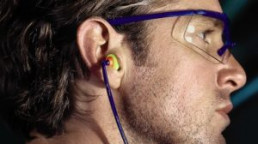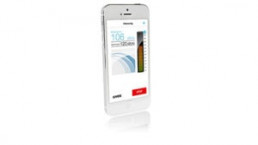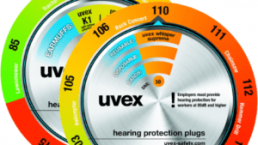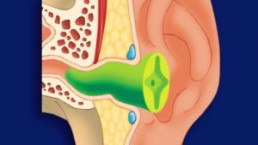World Hearing Day takes place on 3 March each year, when the World Health Organisation (WHO) draws attention to the significance of good hearing and the importance of prevention. In line with our mission of “protecting people”, we also help to protect people’s hearing – every single day of the year.
Our hearing’s job is to pass on external noises to our brain. If its functionality becomes impaired – by noise-induced hearing loss, for example – this can have unpleasant, and even severe, consequences in the following areas:
- Information exchange
- Warning/alert function
- Emotional perception
- Spatial orientation
- Social function
Details on the potential problems this may cause can be found here:
How does our hearing work and how is the ear structured?
Hearing in the workplace - "noise-induced hearing loss" occupational disease
Hearing is also an important aspect of work safety and it must be protected from noise in the workplace. Although noise-induced hearing loss has been high on the list of recognised occupational diseases for many years, it usually occurs slowly and without pain.
Permanent noise in the workplace creates stress, although some employees may only be subconsciously aware of it. Stress situations represent an additional source of risk and can lead to a reduced ability to concentrate, which may negatively affect productivity.
The risk of hearing damage and the need to protect hearing is often only recognised when it is too late. Only those who suffer from hearing loss really understand just how essential a good sense of hearing is and that protecting and preserving it should be a top priority.
Highest protection category for hearing protection
The European Parliament has decided to attach greater priority to hearing protection in its Regulation on Personal Protective Equipment. The new PPE Regulation (EU) 2016/425 places hearing protection in the highest protection category, III.
The highest protection category, III, exclusively comprises risks that may lead to serious consequences such as death or irreversible damage to a person’s health. These risks include noise.
This new classification also has consequences for users. When supplying category III protective equipment, companies are obliged to provide their employees with practical training.
This training may include, for example:
- Types of hazards
- Appropriate use of protective equipment
- Correct handling of protective equipment
- Information on recognising potential hazards
All uvex hearing protection products are covered by this risk category and protect against the risks of damaging noise.
We will be happy to provide you with support and advice to help you carry out this training with your employees – please feel free to get in touch.
uvex offers hearing protection for any situation and noise level
Noise causes damage slowly and without pain. For this reason, we develop hearing protection for any situation and noise level, where speech can still be understood and signals recognised. But how can you find out which type of hearing protection is right for you?

Hearing protection guide
The uvex hearing protection guide provides a clear overview of everything you need to know about hearing protection and will help you find the right uvex hearing protection products for you.
uvex Dezibel App für iPhone
With the uvex Dezibel app, you can find the right hearing protection for you, any time and anywhere. Simply measure the volume level and the app will recommend suitable earmuff or earplug hearing protection for the current situation.


Hearing protection consultants
In order to identify suitable hearing protection for your work environment, you can try out our uvex hearing wheel online. This will show you appropriate hearing protection based on the noise level in your workplace.
Adapted hearing protection (otoplastics)
Every ear canal is different, both in terms of size and shape, and as individual as a fingerprint. For those looking for maximum wearer comfort and the greatest possible acceptance by the wearers of hearing protection, the advantages offered by adapted hearing protection otoplastic will no doubt appeal to them.

Funtional testing of otoplastics
The German Social Accident Insurance Association (DGUV) sets out a functional test in its “Use of hearing protection otoplastics” prevention guideline. A leakage test is performed on the otoplastic in the ear to ensure the protective function of the otoplastic hearing protection (function check).
Its protective function is ensured when the following requirements are met:
- Professional function check prior to first use
- Function check repeated at intervals of no more than three years
The function check is carried out using a special set of headphones and a tone audiometry test. The measuring methods defined by the manufacturer and the respective limit values for otoplastics must be applied in this process.
uvex offers a number of ways to carry out a functional check in your company.
To arrange function checks for uvex high-fit otoplastics, please speak to your uvex contact directly.
You can contact our internal otoplastics consultancy team free of charge within Germany:
free of charge within Germany:
Phone: 0800 8839686
Fax: 0800 6644895
E-Mail: high-fit@uvex.de
For Austria:
Phone: +49 911 9736-1433
Fax: +49 911 9736-1679
E-Mail: high-fit@uvex.de